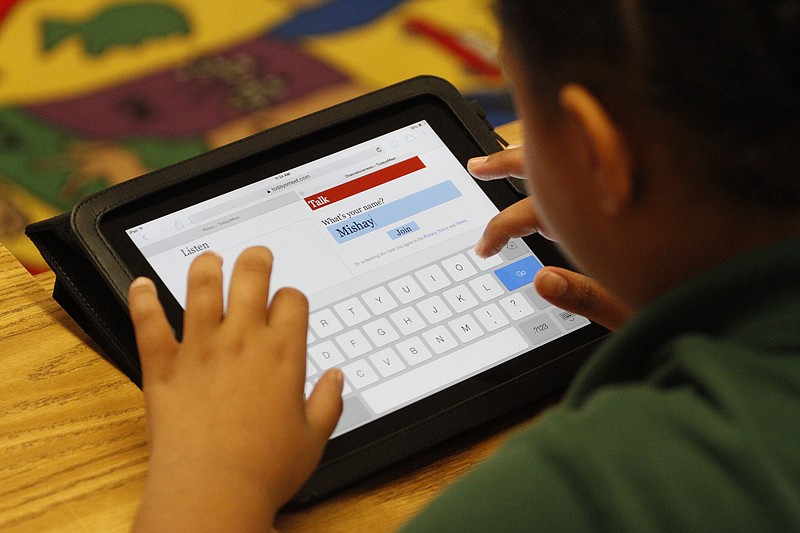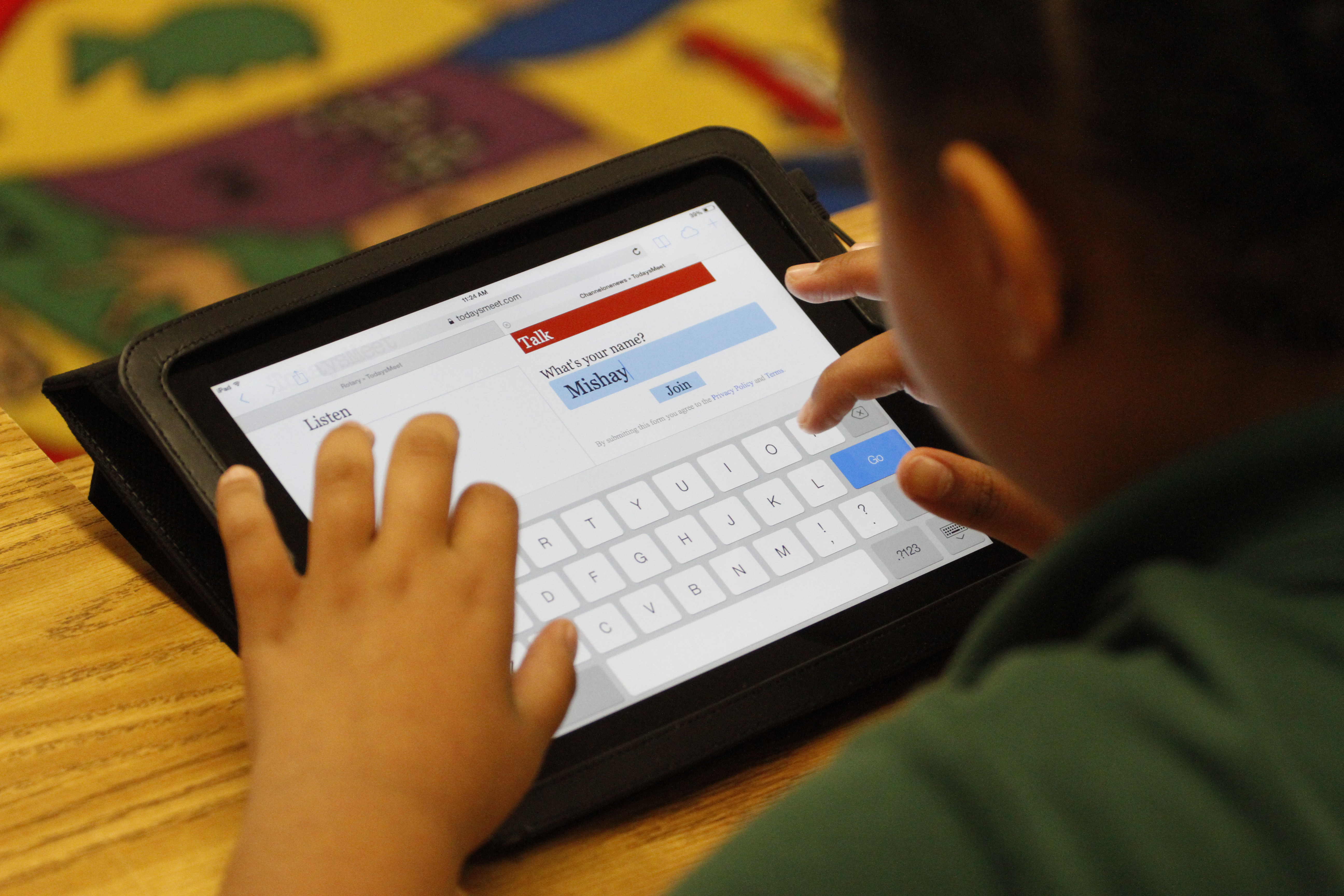Interactive map
View a map showing where EPB gigabit and 100 mbps customers live, by zip code.
Replacing some Hamilton County students' textbooks with iPads was a move intended to boost faltering public education performance.
Tablets were more engaging that their printed predecessors, and they opened up a world wide web of opportunity. Have a question? Just Google it. Plus, they prepared students for the ever-changing work world, in which even jobs flipping hamburgers require an application online.
But school officials say there is one big problem. Many of the students, once home with their brand-new devices, don't have Internet access and likely won't get it.
"For some time now, we've identified ourselves as a technological community," Hamilton County Schools Superintendent Rick Smith said. Still, he said, "there's going to be lots of kids that don't have access at home."
Roughly 3,380 tablets and laptop computers have been assigned to county school students, covering about 8 percent of the total student population. The devices, funded through grants and foundations, are being tested to assess the value of their broader use.
But school officials are finding that low-income students in particular can't connect at home. Motivated kids find Wi-Fi access by visiting a neighbor's house, business or recreation center, Smith said, but many do not.
In the downtown area, for example, only 7 percent of potential customers subscribe to high-speed broadband Internet. In economically depressed areas such as Alton Park and East Lake, only 15 percent of residents have high-speed Internet, according to EPB.
The Public Education Foundation and the Benwood Foundation funded a pilot program last year to test tablet use in schools. Around 2,000 iPads and Chromebooks were given to students in six schools -- Calvin Donaldson Elementary, East Lake Academy, the Howard School of Academics and Technology, Red Bank Elementary, Red Bank Middle and Red Bank High School.
Keri Randolph, vice president of learning at PEF, said the program is working to engage students in their work, but they have found that between 30 to 40 percent of participants don't have home access to the Internet.
Digital equality
In 2007, only 12 percent of school site administrators nationally noted digital equity as a primary technology challenge; in 2012, 41 percent identified that issue as critical. In just one year, from 2011 to 2012, districts piloting a Bring Your Own Device (BYOD) approach increased by 47 percent. When asked in 2010 if they would allow their students to use their own devices at school for academic purposes, only 22 percent of principals said that was likely. In 2012, more than a third of principals (36 percent) said that a new BYOD policy for students was likely. Source: "From Chalkboards to Tablets: The Digital Conversion of the K-12 Classroom," a 2013 report by Project Tomorrow
"A lot of these kids are transient," she said. "Even if they have a home connection this month, they might not have it the next month."
Still, Randolph said, several local task forces are working to bridge the community's digital divide.
Comcast offers Internet for $10 a month to low-income families, but there are a lot of hurdles to entering the program, Randolph said. The paperwork is extensive and the family must have a clean record with Comcast -- no late payments or unpaid fees -- a standard that many low-income families can't meet, she said.
"We have not found that to be a viable option for a lot of families," she said.
Another option being discussed by officials at PEF is called Tech Goes Home, which is modeled on a similar program in Boston. With Tech Goes Home, a responsible adult and a child go through a class and at the end get a deeply discounted computer and subsidized or free Internet service, she said.
Some techies at the Chattanooga Public Library are tooling around with another idea to create Wi-Fi access in certain low-income neighborhoods through a mesh network that uses low-cost devices that repeat the signals between computers and one high-speed Internet connection, reducing the need for multiple connections to the Internet. City leaders also plan to expand public Wi-Fi options.
The Associated Press reported that the Federal Communications Commission agreed Thursday to dramatically boost spending to bring high-speed Internet access to schools and libraries in poor or rural areas.
The plan is to boost spending by 60 percent, to $3.9 billion, FCC Chairman Tom Wheeler said. Americans' phone bills would likely rise by about $2 a year to cover the cost, the AP reported.
Randolph said a solution is definitely needed to address vast inequities in technology access.
"The world of work has changed, and access to technology is part of all workplaces," she said. "The digital divide does affect kids and their education."
Contact staff writer Tim Omarzu at tomarzu@timesfreepress.com or www.facebook.com/tim.omarzu or twitter.com/TimOmarzu or 423-757-6651.
Contact staff writer Joan Garrett McClane at jmcclane@timesfreepress.com or 423-757-6601.

